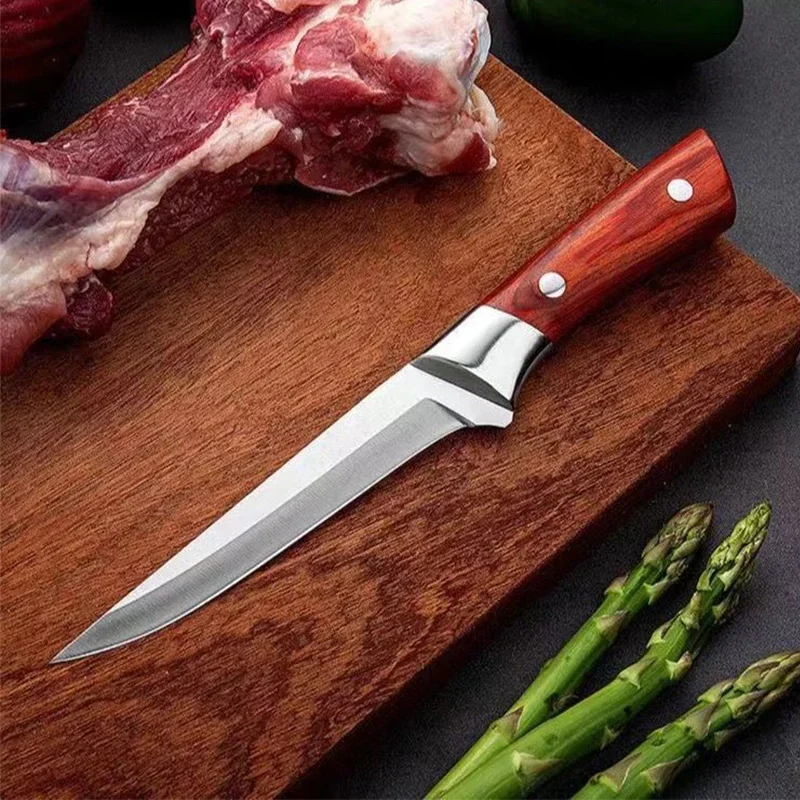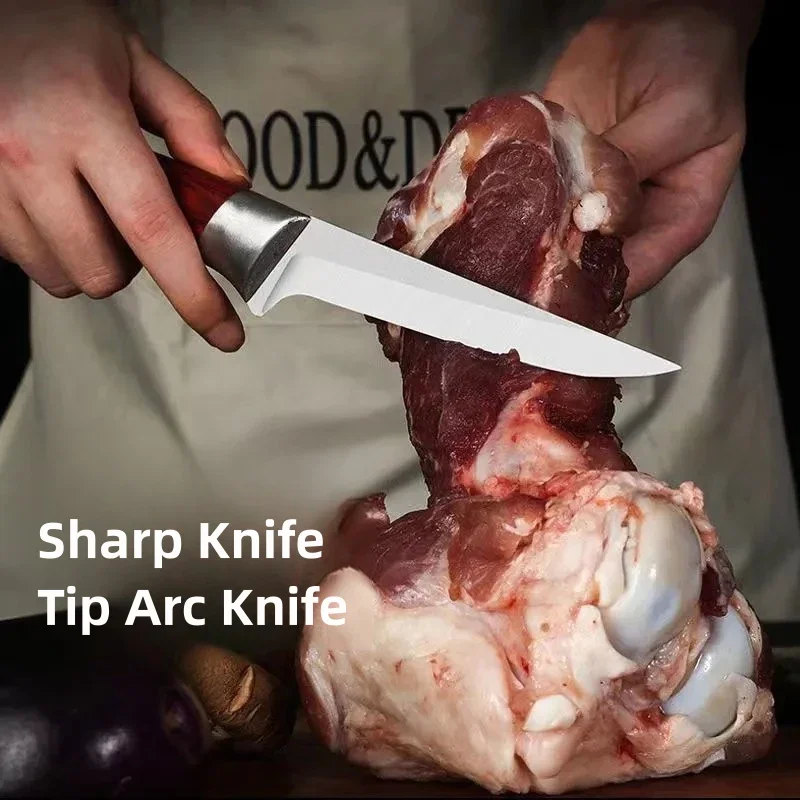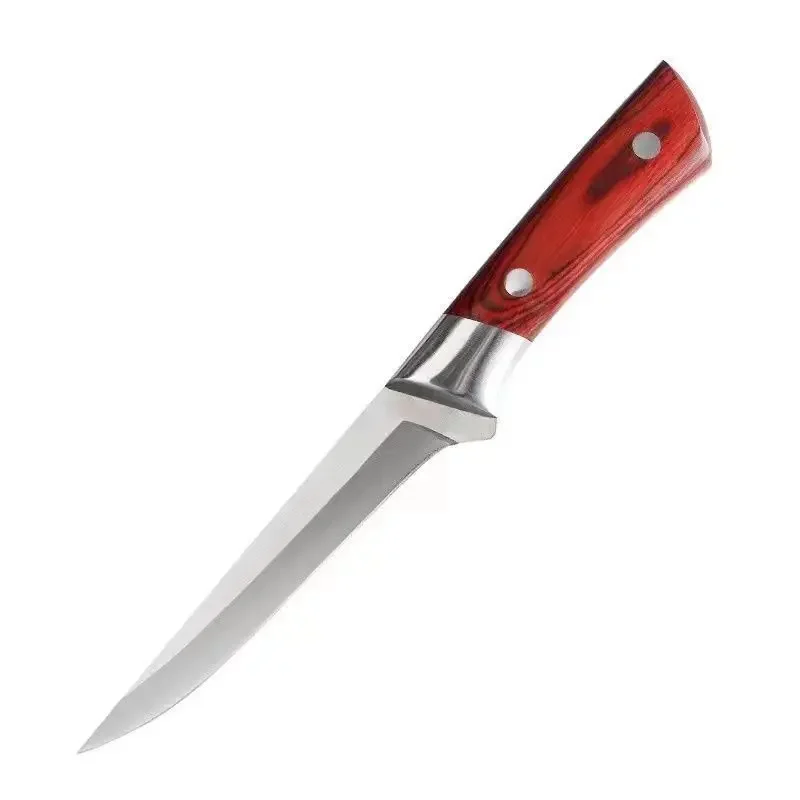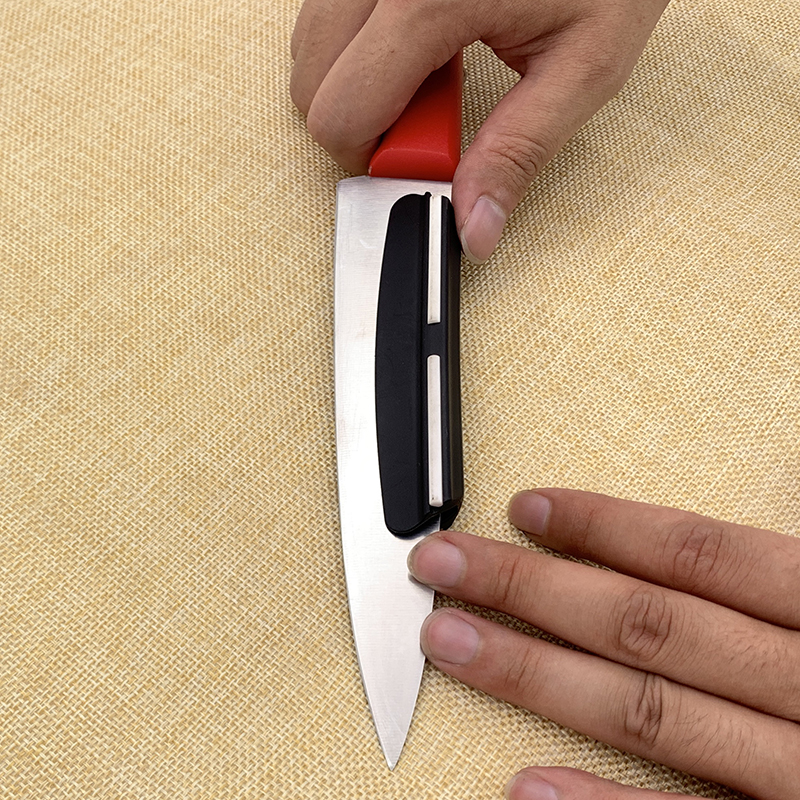Introduction
Damascus kitchen knife are highly regarded in the culinary world. Their unique patterns, sharpness, and durability make them a favorite among chefs and home cooks alike. These knives not only serve a practical purpose in the kitchen, but they also provide an aesthetic appeal that can enhance the cooking experience. In this article, we will explore the history, craftsmanship, types, and benefits of Damascus kitchen knives.

The History of Damascus Steel
Origins and Ancient Techniques
The story of Damascus steel is rich and fascinating. It traces its roots back to ancient times. The name “Damascus” comes from the capital of Syria, where skilled artisans once created exceptional blades. The method of creating this steel involved combining different types of iron and steel. The result was a blade that was both strong and flexible, ideal for combat and culinary uses.
Ancient warriors valued Damascus blades for their ability to hold a sharp edge. These blades also had a unique appearance with flowing patterns that whispered of their complex creation process. Historians believe that the original Damascus steel was produced using wootz steel, which was made in India and then traded through the Middle East.
Modern Resurgence of Damascus Knives
The ancient techniques of creating Damascus steel almost faded into obscurity. However, in recent years, artisans began to rediscover these methods. Today, knife makers use a blend of traditional and modern techniques to produce quality Damascus kitchen knives.
The modern method often involves layering different types of steel. Artisans forge and fold these layers repeatedly to create a pattern. This allows for a blend of hardness and flexibility, perfect for kitchen use. The production of Damascus steel has evolved, but the core principles of craftsmanship endure.

The Craftsmanship Behind Damascus Kitchen Knives
Intricate Layering Process
Creating a Damascus kitchen knife involves several steps. First, artisans select high-quality steel. They often choose high-carbon steel for its hardness and stainless steel for its resistance to rust. This combination ensures that the knife remains sharp and durable while being easy to maintain.
Once the steel is selected, the layering process begins. Knife makers will often stack several layers of different steels together. They then apply intense heat, heating the steel to about 2,400 degrees Fahrenheit. This process bonds the layers and makes them pliable.
Next comes the forging phase. Artisans hammer the steel into shape. They repeatedly fold and draw it out, typically 30 to 60 times. With each fold, the layers multiply, creating a unique pattern. The beauty of Damascus steel lies in its one-of-a-kind design. Each knife tells a story through its pattern, a testament to the craftsmanship behind it.
Attention to Detail in Design
Once the blade is shaped, artisans then focus on the details. The blade’s edge must be honed to a razor-sharp finish. This process requires precision and skill. A well-honed edge allows for clean cuts, whether chopping vegetables or slicing meats.
The handle is just as important as the blade. A comfortable, ergonomic handle enhances user experience. Many artisans choose materials such as wood, resin, or even bone for the handle. These materials complement the beauty of the blade while ensuring a secure grip during use.
After crafting the knife, artisans often polish it to reveal its stunning patterns. This final touch adds to the knife’s character and beauty. The finished product not only looks good but feels good in the hand.
Types of Damascus Kitchen Knives
Chef’s Knife: The All-Purpose Tool
The chef’s knife is the backbone of any kitchen. Whether you are a novice or a seasoned chef, this knife is essential. A Damascus chef’s knife offers unmatched versatility. Its design allows it to handle a variety of tasks, from chopping herbs to slicing meat.
Typically, a chef’s knife ranges from 6 to 12 inches in length. The blade is broad, tapering to a sharp point. This shape facilitates rocking motions for chopping. The weight of a Damascus chef’s knife provides balance, making it comfortable to use for long periods.
Not only does a Damascus chef’s knife perform well, but it also looks stunning on your kitchen counter. Its intricate design can serve as a centerpiece, showcasing your commitment to quality cooking.
Paring Knife: Precision in Smaller Tasks
The paring knife is another essential tool in the kitchen. This small knife excels at tasks that require precision. Whether peeling an apple or deveining shrimp, a Damascus paring knife makes these tasks easier.
With a typical length of 3 to 4 inches, a paring knife provides excellent control. The sharp blade allows for intricate cuts, making it ideal for delicate tasks. Many chefs appreciate the ability to handle small produce easily.
Like other Damascus knives, the paring knife’s appearance is striking. Its unique patterns and beautiful handle can elevate even the simplest kitchen tools. This elegance makes it a must-have for any cooking enthusiast.

Santoku Knife: Asian Influence in the Kitchen
The Santoku knife is a Japanese-inspired tool gaining popularity worldwide. Characterized by its wide blade and straight edge, the Santoku knife excels in chopping, slicing, and dicing. Many cooks appreciate its versatility, making it another essential knife in a well-rounded kitchen.
A typical Santoku knife is around 5 to 7 inches long. The blade often features a granton edge, which prevents food from sticking during cutting. This design is particularly useful for slicing vegetables or meats.
Choosing a Damascus Santoku knife adds a touch of elegance to this practical tool. The beautiful patterns not only enhance its aesthetic appeal but also signal the high-quality craftsmanship behind the blade.
Benefits of Using Damascus Kitchen Knives
Superior Sharpness and Edge Retention
One major advantage of Damascus kitchen knives is their sharpness. The high-carbon steel used in these knives holds an edge incredibly well. This quality means you spend less time sharpening and more time cooking.
The fine edge also allows for clean cuts. Whether you are chopping vegetables or slicing fish, a sharp knife reduces bruising. This preserves the texture and flavor of the ingredients. Additionally, a precise cut helps with even cooking, letting food cook uniformly.
Many professional chefs rely on Damascus knives for this reason. They know a sharp knife makes a significant difference in the quality of their dishes. Home cooks can benefit from this level of precision in their everyday cooking.
Durability and Longevity
Damascus kitchen knives are built to last. The layering process creates a strong blade capable of withstanding daily use. These knives often resist chipping and breaking, which can occur with lower-quality alternatives.
Moreover, the stainless steel components offer resistance to rust and corrosion. This quality ensures that the knives remain functional over time. Proper care, such as hand washing and drying immediately after use, extends their lifespan even further.
Investing in a high-quality Damascus knife means investing in a tool that will serve you well for many years. With proper care, these knives can become family heirlooms passed down through generations.
Aesthetic Appeal and Craftsmanship
One cannot overlook the aesthetic appeal of Damascus kitchen knives. Each knife boasts a unique pattern, which means no two blades are identical. The craftsmanship involved in creating these knives enhances their beauty and makes them a suitable centerpiece for any kitchen.
Furthermore, many artisans pay close attention to the handle, choosing materials that complement the blade. The combination of a beautiful blade with a sturdy and attractive handle creates a breathtaking piece of kitchen art.
Many chefs take pride in showcasing their Damascus knives. Rather than hiding them away in a drawer, they often display them prominently. This visibility enhances their culinary workspace while demystifying the art of cooking.
Caring for Your Damascus Kitchen Knives
Proper Cleaning Techniques
To maintain the beauty and functionality of your Damascus knife, proper cleaning is crucial. Always wash your knife by hand using warm soapy water. Avoid putting it in the dishwasher, as this can cause damage.
After washing, dry the knife immediately with a soft cloth. This action helps prevent rust and keeps the blade in prime condition. Leaving water on the blade can promote corrosion, particularly if you use a high-carbon steel knife.
Regular Sharpening and Maintenance
Keeping your knife sharp is essential for its performance. Regular honing with a whetstone or honing rod can help maintain the edge. Many chefs recommend honing the blade before or after each use.
When your knife becomes dull, it’s time for sharpening. Using a whetstone or sharpening tool designed for high-quality blades will yield the best results. There are many tutorials available, or you may wish to visit a professional sharpener to ensure the best care.
Proper handling is also crucial to maintaining your Damascus knife. Always use a cutting board made from wood or plastic, avoiding materials like glass or metal that can damage the blade. Treat your knife with care, and it will serve you well for years.
Conclusion: The Timeless Value of Damascus Kitchen Knives
In conclusion, Damascus kitchen knives combine practicality with artistry. They offer superior sharpness, durability, and aesthetic appeal. Their rich history and attention to craftsmanship set them apart from conventional kitchen tools.
Whether you choose a chef’s knife, paring knife, or Santoku knife, you’re investing in a piece of art as much as a practical tool. Proper care will ensure that these knives last a lifetime, serving and enhancing your culinary experiences.
As you explore the world of cooking, consider adding a Damascus knife to your collection. It will elevate not only your kitchen’s functionality but also its style. Embrace the magic of Damascus steel and enjoy the art of culinary perfection.
